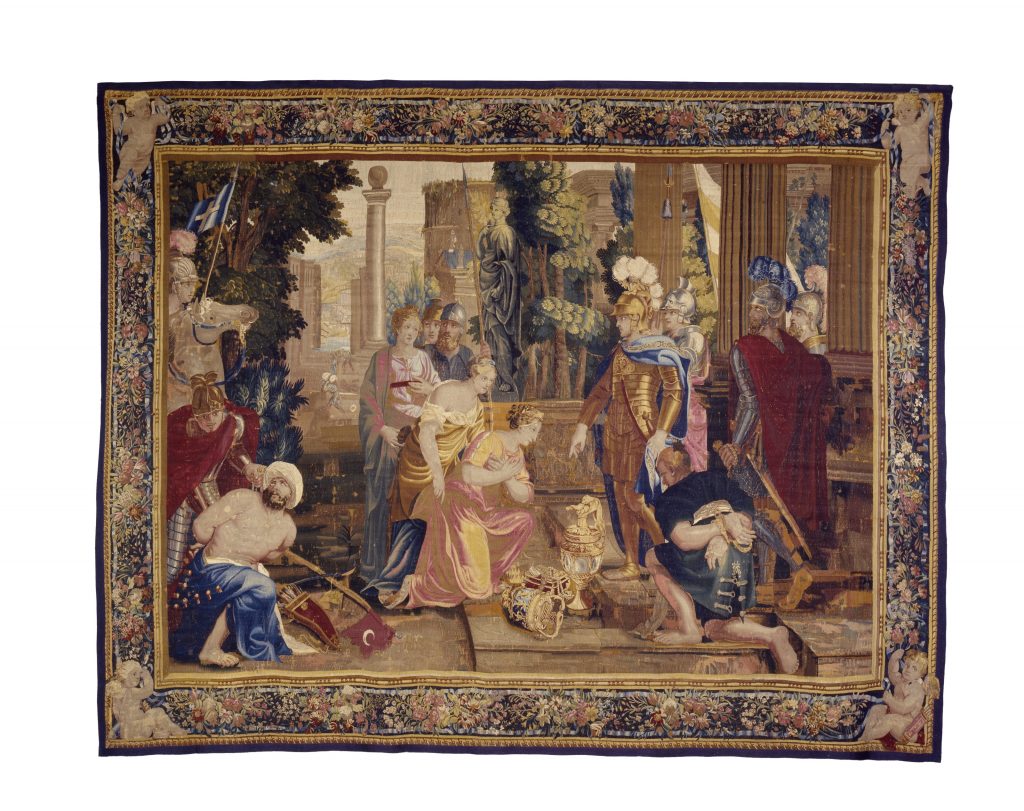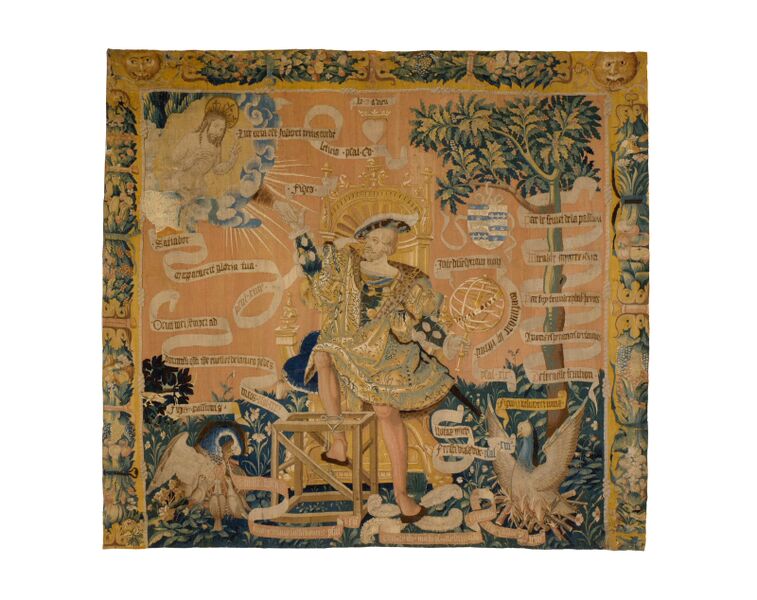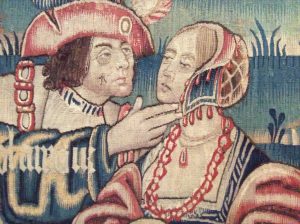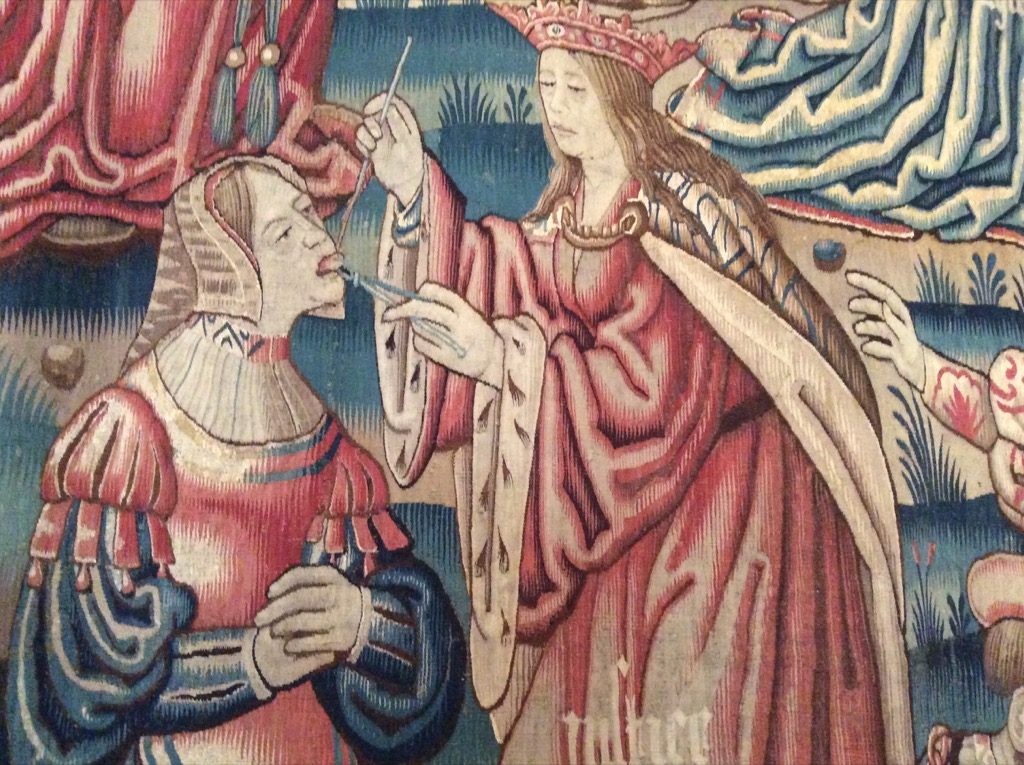
“Le monde mis en balance,” detail, a lady having her tong cut to prevent blasphemy, Brussels 1520-1530
The city of Beauvais, an hour North of Paris, has a long tradition of tapestry weaving since Colbert, Louis XIV th’s minister, established a Manufacture Royale in 1664. Three centuries later, French Minister of culture André Malraux decided to create a museum devoted this art. It was built in the early 70’s, just in front of the sumptuous medieval cathedral, by architect André Hermant, a student of Auguste Perret. And I visited there an intriguing exhibition of twenty tapestries lent by Musée des Arts Décoratifs in Paris on the theme of « Amours, Vices, Vertus » (Love, vice, virtue) until August 30 th.
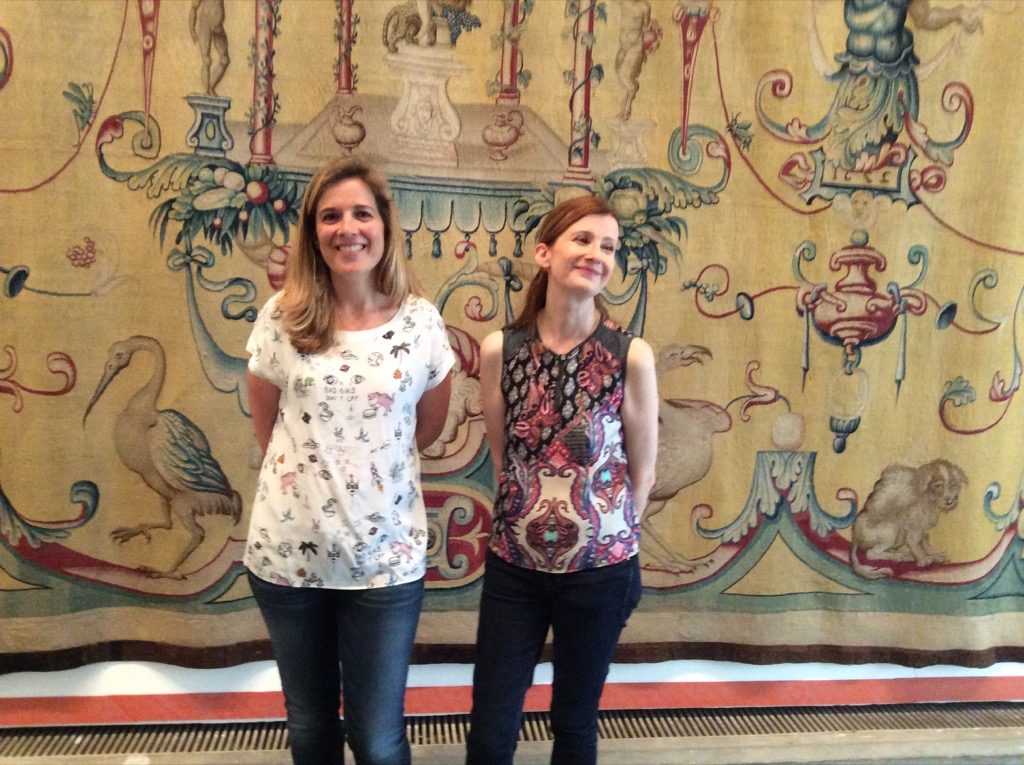
Gaïdig Lemarié who runs the gallery and Françoise-Claire Prodhon in front of “Grotesques sur fond jaune, (1546-1560)
The show starts with two 16 th century pieces, Amour Sacré, ( man) Amour Profane, (woman) embroidered in written sentences. Ladies represent sin and superficiality. Men, light and faith. Then come three tapestries on vice and virtue (the fourth one is at the Art Institute in Minneapolis) with each a blue sphere representing the world, hidden in the design. Again verses in medieval French discuss temptation and charity, justice and blasphemy… Vanity contemplates itself in a mirror, Friandise represents greediness.
Three more tapestries representing « grottesche » on a yellow backgroung reveal amazing details of insects put on a leash.
Ovide’s “Metamorphosis” are illustrated in an XVIIIth century grisaille « papier peint ». The way nature is represented in its exhuberance is striking and the two curators who had obvioulsy just reread Ovide were extatic.
Twelve contemporary artists were asked to send some works to balance these unique medieval images and Annette Messager is present in the first room with mysoginistic proverbs embroidered on linen. They all show how women were discredited in the Middle Ages , « Femme Sage reste à son ménage » (Wise woman stays within her house). Another artist, Iranian Fariba Hajamadi, designed an erotic, Indian style, wall paper. Another one, Philippe Favier, drew with China ink and white gouache, 12 pornographic scenes on shirt cuffs. It was interesting to see a group of old ladies put on their spectacles to see them properly…
This exhibition poses once again the problem of adding uneven pieces of contemporary art to fabulous ancient art. The power and complexity of the tapestries with their classical themes, is so strong that it did not need more. MUDO, the new museum of art set in the Bishop’s palace, next door is also worth the trip. (Galerie nationale de la Tapisserie, Beauvais, until August 30 th)
Share this Diary
